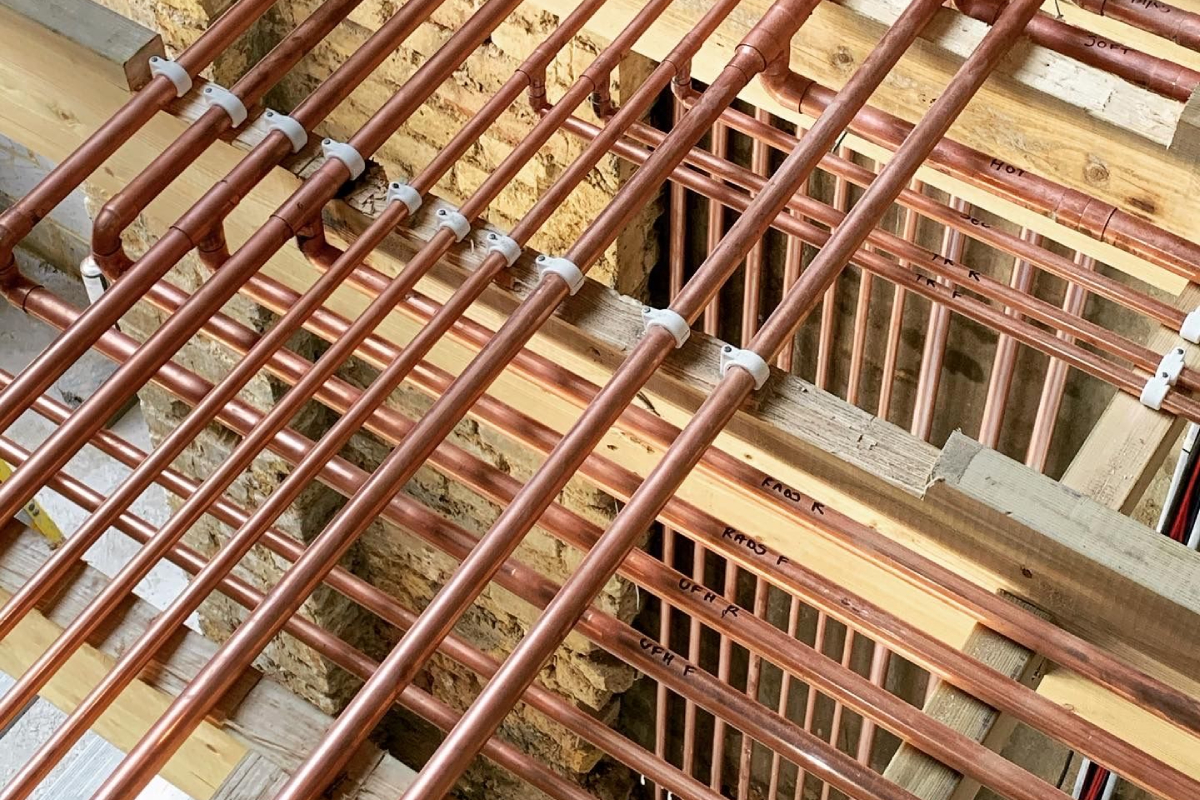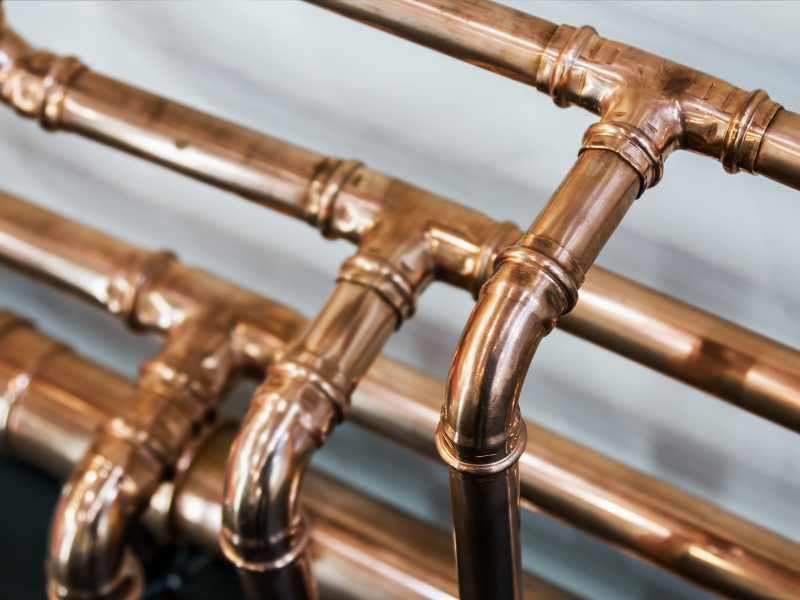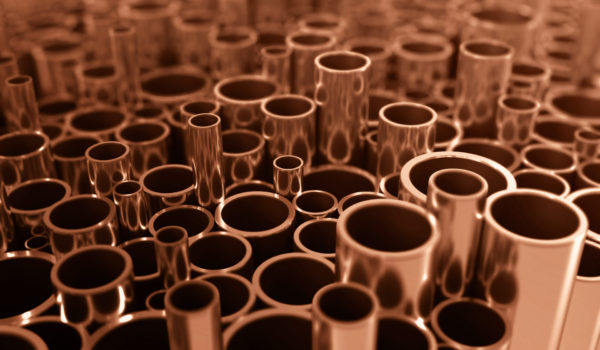Water service lines are key to offering drinking water, but the choice of piping material is imperative to making that supply safe and sterile.
The non-corrosive and antimicrobial properties of copper make it a great option for water pipes, particularly in comparison to plastic.
Keen to learn more about the safety credentials of copper? Want to know what makes it a healthier option than plastic? Keep reading to find out!
A brief history of copper in the plumbing industry
Copper pipes have been used for thousands of years and date all the way back to Ancient Egypt, the first documented civilisation to make widespread use of the material for plumbing.
An impressive example of copper piping standing the test of time is the 4,500-year-old tomb of King Sahure, which was built using an elaborate copper pipe system that is still partially intact today.
Recently, copper has faced competition from plastic piping, with the preference for plastic being its affordability, appealing to budget-conscious homeowners and housebuilders. However, the health risks of plastic are now becoming evident, despite the material being around for a significantly shorter period of time.
Plastic drinking water pipes can produce more than 150 Volatile Organic Compounds (VOCs), many of which are deemed harmful to human health. Some of the VOCs from plastic pipes can also generate appalling smells and unhealthy fumes that can be inhaled.
On the other hand, copper has shown no traces of these damaging risks to human health, possessing both longevity and reliability over plastic. While plastic can appeal as the cheaper alternative, homeowners should prioritise the state of their health over a lower installation price when considering their choice of piping material.

Learn more about the history of copper pipes below.
Why copper pipes are safe for drinking water
One of the biggest debates in the plumbing industry today is copper versus plastic pipes. When considering the safety credentials of each material, it is clear copper pipes are the best option for keeping drinking water sterile.
One of the main benefits of copper water pipes is that they’re naturally antimicrobial, with a study from the National Library of Medicine (NLM) establishing copper’s natural resistance to bacteria, viruses and fungi.
Controlled laboratory tests have shown that many of the most common waterborne pathogens, such as poliovirus, E-coli and Legionella pneumophilia, are killed shortly after coming into contact with copper.
In addition, a reliable building material like copper can be trusted to retain its structural integrity. One of the main ways bacteria can enter the water supply is through cracks and leaks in plumbing pipes, but copper water pipes are robust and naturally corrosion-resistant to prevent this from happening.
Compared to other plumbing materials, copper’s corrosion resistance and mechanical strength is among the best, with well-preserved copper pipes lasting for 70-80 years without peeling or cracking.

Learn more about the antimicrobial properties of copper below.
Comparing the safety of copper with plastic
The debate between copper vs plastic pipes has split the opinion of plumbing professionals for many decades, however recent research into the safety of plastic pipes is now tilting the balance of the discussion.
A report from CuSP member, Safe Piping Matters, has shown that commonly used plastic pipe materials can release significant amounts of microplastics into drinking water.
It finds that water-transmission systems built with plastic materials degrade “relatively quickly” as they age.
Scans of the interior pipe surface during this research showed that peeling and flaking released tiny plastic materials into drinking water, increasing the consumption of microplastics and harming the human body.
Commonly used plastic piping materials like PVC, PEX and CPVC, which are made up of dozens of harmful chemicals, all pose their own damaging issues.
In contrast to copper’s antimicrobial properties, plastic pipes have no natural resistance to bacteria and pathogens, allowing harmful germs to spread.

Learn more about the risk of microplastics from plastic pipes.
Copper pipes: the safe choice for drinking water
Resistant to corrosion and naturally antimicrobial, copper is packed with beneficial properties that help keep drinking water safe.
Copper can also limit the waste problem we currently see in the construction industry, with the ability to be infinitely recycled without any loss of quality or performance, driving longevity across the plumbing industry.
Plastic pipes, on the other hand, are made up of hazardous chemicals and can release significant amounts of microplastics into the water supply through natural wear and tear.
Copper must be the go-to material for plumbing installations in the immediate future to ensure clean drinking water and prioritise human health and safety.
Want to learn more about the role of copper in driving safe and sustainable construction practices? Check out our other news items or subscribe to our newsletter.

